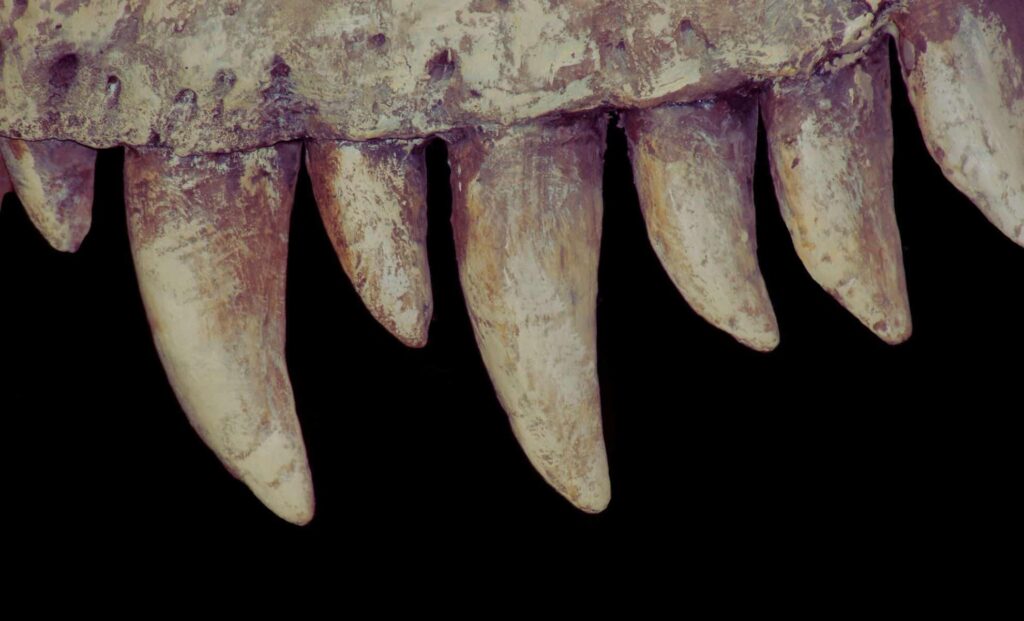In a groundbreaking scientific breakthrough, researchers have successfully reconstructed the composition of prehistoric air by analyzing dinosaur teeth-a feat never achieved before. This pioneering study, recently reported by ScienceAlert, offers unprecedented insights into the atmosphere that dinosaurs once breathed millions of years ago. By unlocking clues preserved in fossilized enamel, scientists are now able to peer back into Earth’s ancient environment, shedding new light on the planet’s climatic and ecological past.
Revealing Ancient Atmospheres Through Dinosaur Tooth Analysis
Scientists have achieved a groundbreaking feat by extracting atmospheric data from the microscopic composition of dinosaur teeth. By analyzing the ratios of oxygen isotopes preserved within tooth enamel, researchers have unlocked secrets about the Earth’s ancient air, revealing fluctuations in oxygen levels that once supported gigantic prehistoric creatures. This method transcends traditional fossil studies, offering a direct chemical link to the environment that dinosaurs thrived in millions of years ago.
The study employed cutting-edge spectrometry techniques, targeting oxygen-16 and oxygen-18 isotopes to reconstruct data with remarkable precision. These isotopic clues correlate closely to the atmospheric oxygen percentages, providing insights into climate conditions and ecological dynamics of the Mesozoic Era. The findings suggest:
- Higher oxygen levels than previously assumed, potentially enabling larger dinosaur sizes.
- Periodic fluctuations indicating shifting climates and vegetative patterns.
- New benchmarks for understanding how prehistoric ecosystems responded to environmental change.
| Isotope | Percentage in enamel | Inferred Atmospheric Oxygen |
|---|---|---|
| Oxygen-16 | 62% | 28% |
| Oxygen-18 | 38% | 20% |
New Insights Into Prehistoric Climate From Mineral Isotope Data
Scientists have achieved a groundbreaking milestone by reconstructing prehistoric atmospheric conditions through the analysis of isotopes extracted from dinosaur teeth. This innovative approach leverages the unique mineral composition found in fossilized enamel, which retains isotopic signatures reflective of the air and climate during the Mesozoic era. By meticulously examining the ratios of oxygen and carbon isotopes, researchers can now infer temperature fluctuations and greenhouse gas concentrations from millions of years ago with unprecedented precision.
This method opens new avenues for understanding Earth’s climatic past and offers a clearer picture of how ancient ecosystems responded to environmental stressors. Key findings from the study highlight:
- Stable oxygen isotope ratios that correlate with ancient temperature shifts
- Carbon isotope variations indicative of atmospheric CO2 levels during the late Jurassic
- The potential to refine models predicting climate dynamics by integrating paleodata from biological archives
| Isotope Type | Measured Ratio | Inferred Climate Indicator |
|---|---|---|
| Oxygen-18/16 | 0.0025 | Average global temperature |
| Carbon-13/12 | 0.0018 | Atmospheric CO2 concentration |
| Strontium-87/86 | 0.0723 | Ocean chemistry shifts |
Future Research Directions and Implications for Earth’s Evolutionary History
The groundbreaking reconstruction of prehistoric air composition from dinosaur teeth opens exciting avenues for future research, potentially transforming our understanding of Earth’s atmospheric and evolutionary milestones. This novel approach could allow scientists to refine climate models of the Mesozoic era by incorporating direct molecular evidence, providing unprecedented insight into the interactions between atmospheric changes and biodiversity shifts. Further studies examining teeth from diverse dinosaur species and different geographies might reveal localized atmospheric variations, contributing to a more nuanced picture of ancient ecosystems and evolutionary pressures.
Beyond paleoclimate applications, this advancement holds transformative implications for evolutionary biology and geology. Researchers could correlate atmospheric data with mass extinction events to explore how fluctuating oxygen and carbon dioxide levels influenced survival and adaptation mechanisms. Key areas ripe for exploration include:
- Tracing links between atmospheric shifts and the emergence of flowering plants
- Assessing oxygen variations as drivers for dinosaur gigantism
- Integrating prehistoric air data into biogeochemical cycles throughout deep time
| Research Focus | Potential Impact | Methodological Approach |
|---|---|---|
| Atmospheric Composition Variability | Reveals climate heterogeneity | Multi-species teeth isotope analysis |
| Extinction Dynamics | Explains species turnover patterns | Chronostratigraphic correlations |
| Evolution of Respiratory Systems | Links physiology to oxygen levels | Comparative anatomy and modeling |
To Wrap It Up
This groundbreaking study marks a significant leap forward in paleontology, offering an unprecedented glimpse into the Earth’s ancient atmosphere through the meticulous analysis of dinosaur teeth. By reconstructing prehistoric air composition, scientists not only deepen our understanding of the world these magnificent creatures once inhabited but also provide valuable data that could inform climate research today. As technology continues to advance, such innovative approaches promise to unlock even more secrets of our planet’s distant past, bridging millions of years in the pursuit of knowledge.
